Still unsure if you have Lipedema? Worried about all the unknowns of seeking treatment? You’re not alone! Meet Cat, one of the numerous women with lipedema, Dr. Wright’s patient who travels from Austin, Texas to St. Louis to complete her five scheduled lipedema surgeries. Cat is a writer, a women’s health advocate, and has a passion for documenting her journey and helping other women through it. As long as she can remember, Cat has struggled with her weight. She was never considered an obese child or teen, was active in sports from a young age, and trained and ran half marathons as an adult. Still, though, she found herself struggling with her weight and living with debilitating pain. She spent her summers avoiding the outdoors (because that meant she had to wear shorts or be miserable), never participated in beach or pool trips, and lived a daily struggle of physical and emotional pain.


Not knowing any different, her family explained her issues away, helplessly insisting that she naturally had a “pear body shape”, which ran in her family. She bruised constantly, which was diagnosed as anemia. While she is slightly anemic, Cat has reported that her bruising and painful-to-the touch legs have improved drastically after only two surgeries on her lower body. After years of doctors telling her she was overweight and needed to continue to cut down her calories, Cat was at a loss. Below are her experiences, which she’ll continue to update through the remaining surgeries and recovery process.
Lipedema Ruined & Saved This Fat Girl’s Life
In her first blog post related to Lipedema, Cat writes of her journey towards diagnoses, which ultimately led her to Dr. Wright’s office in 2019.
When the Solution is More Painful Than the Problem
After her initial consultation and diagnosis, Dr. Wright and his team put a treatment plan together for Cat. Her first surgery was in December 2019, and this article outlines what she experienced before, during, and after treatment.
Stay tuned for more! Cat recently completed her 2nd surgery on her upper legs and will be reporting back to detail her experiences. Lipedema is estimated to affect 10% of all women across the world – you’re far from alone, and we’re here to help you through this process to a more fulfilling, healthy, and pain-free life.
In this blog, Cat K shares her real-life experience with lymph sparing liposuction to treat her lipedema.
My first Lipedema surgery was at the end of 2019. For weeks after, I did not open my laptop, except the occasional Netflix in bed. To say I was underprepared for the pain and disruption that came with this surgery does not do my folly justice. I was both overly confident and naive. Stubborn and headstrong. And ultimately, humbled and overcome. It stripped me of my desire and motivation to write and document the journey. Quite frankly, it tore me of nearly everything other than pushing through to wake up, muster enough energy to smile at work, and to get home, immediately ready for bed.
Pain is one thing, and overall, I’m able to deal with it. It’s temporary, and a natural partner to any surgical procedure. I anticipated the physical pain, but what I didn’t expect was how long it would linger, and how much it would affect my life in every tiny moment. When I need lip balm, water, or a tissue, the stretch aches. When my feet are cold and I need to put on socks, putting them on myself is out of the question.
Get yourself a friend like mine. Livia drove from Chicago to St. Louis to care for me, including putting my socks on for me, despite my protests that I could handle it on my own.
Perhaps more intimately, going to the bathroom. My god, what kind of torture are compression leggings at 2 AM, and all you can do is think of waterfalls and dripping sinks and rainstorms. Oh, and you also should be sure to drink as much water as physically possible, to help with the swelling. WTF.
While we’re on the topic, what kind of hell are compression garments?
Compression garments (def.): Adult-size Spanx shrunk to the size of a toddler’s leggings, which you must pull up and over your bruised, swollen legs. Then figure out how to take them on and off when you need to use the toilet.
One-month post-surgery and this single piece of clothing is still a pain in my ass — literally. I’m back to driving, I’m back to work, and I can even switch to just one layer of compression (instead of two) when I sleep. Yet by 2 PM, I’m sitting at my desk, struggling to breathe because the pantyhose layer is so tight on my stomach.
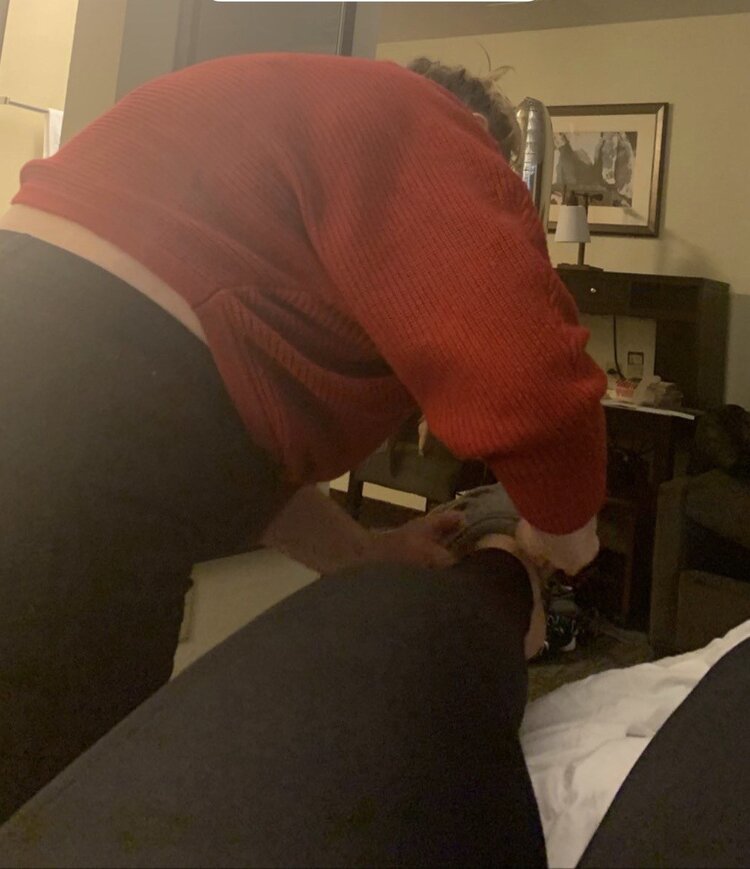

When I stand up to stretch, the back of the hose hugs my legs so tight that I have dark red rings around my knees and ankles. In all honesty, today, I gave up. I took off the pantyhose layer in the office bathroom, but I took them off so quickly and had a strong enough head rush that I almost passed out. In the work bathroom. Pants-less.
Bruised and discolored legs and one of many insertion points.
On the bright side, the ridiculousness of my bathroom stupor made me laugh and re-center. The journey has been painful, the solution is painful, and the freedom yet to come will be worth it. Until then, I’m dedicated to sharing the ugly truths and brilliant successes with those who are looking for answers. Or even for those who are just curious; It’s gross and fascinating.
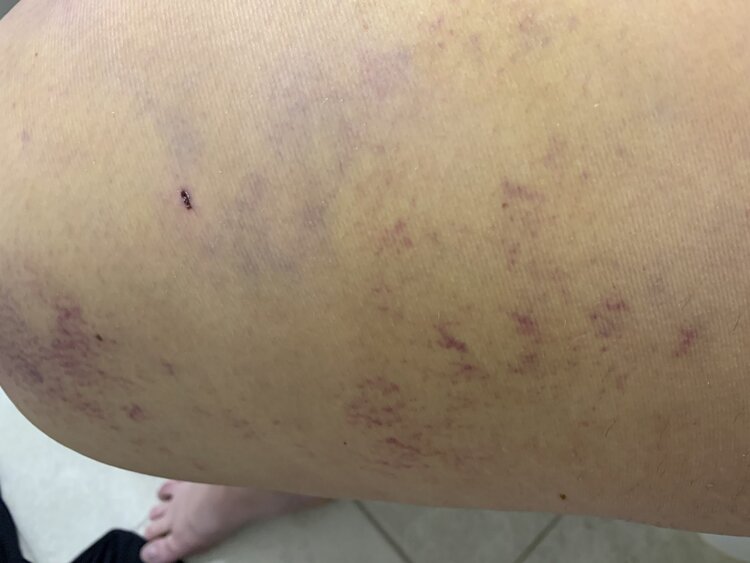

The tiny holes previously used for the tubes are repurposed for the small suction wand. For the next several hours, I watched the doctor push the rod around and suck out a mix of fat, liquid, and blood.
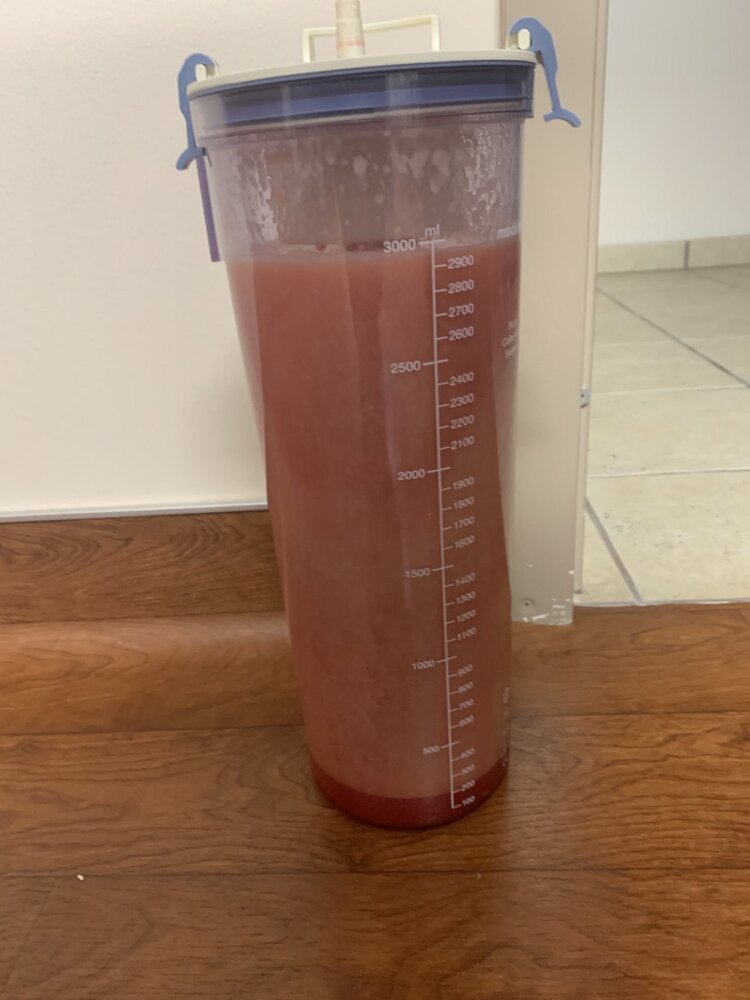

This brings me back to the beginning: recovery sucks. The first two nights were particularly tough to get through, for three main reasons.
Like the naive, hard-headed person I am, I had a post-op appointment the day after surgery and then proceeded to the airport to fly home. I cannot begin to tell you what a mistake this was. I needed wheelchair assistance through security and to the plane, and then from the plane to my sister picking me up. Pro-tip, even if it should be obvious:
Fast forward one month, and I’m sitting on my couch, no longer leaking fluid. I can drive again, I can put on my socks, and I’ve gotten my average time to get dressed down to about 15 minutes. I’ve lost 26 pounds, specifically from my inner thighs and knees. I don’t have full feeling in my legs just yet, but I can walk almost normally, stretch carefully, and next week I plan to return to yoga.
For all the pain, cursing, and moments of regret when I couldn’t get my compression hose over my butt, I’ve stuck to the schedule and am ready for the next procedure. Despite the solution feeling more painful and desperate than the Lipedema itself, I see small pieces of progress each day, signaling that I’m on the right track. After a lifetime of chronic pain and disappointment, I consider this a win.
If you’re curious about Lipedema and think you might have it, you can read more about my journey before diagnosis here. If you’re interested in learning more from my doctor and his incredible team, visit Dr. Wright’s website here.
In this blog, a woman shares her very real experience finding out she has lipedema disease.
In my 30 years of life, or at least over the last ten years, my weight and chronic pain has left me at a loss. I’ve tried every crash diet that exists — Keto, HCG, Phentermine, low-fat & high-protein, intermittent fasting, and the Beyoncé detox of spicy lemon water. I’ve trained and ran half marathons, hired personal trainers, seen a nutritionist, and eventually, when my anxiety and depression took over, started therapy. I’ve really tried not to be fat, but here I am.
My ego would like me to point out that I’m not an obese person, although my doctor would disagree. I was never an overweight kid and remained active into adulthood. I played basketball, ran track, and practiced a balanced diet. When I felt pain, I contributed it to my weight. When the pain turned debilitating after starting birth control at 19 and my weight shot up, my doctor told me to “lay off the cake.” Had he spent more than ten minutes with me, I could’ve explained that I’m not a fan of cake, and he was a dick.
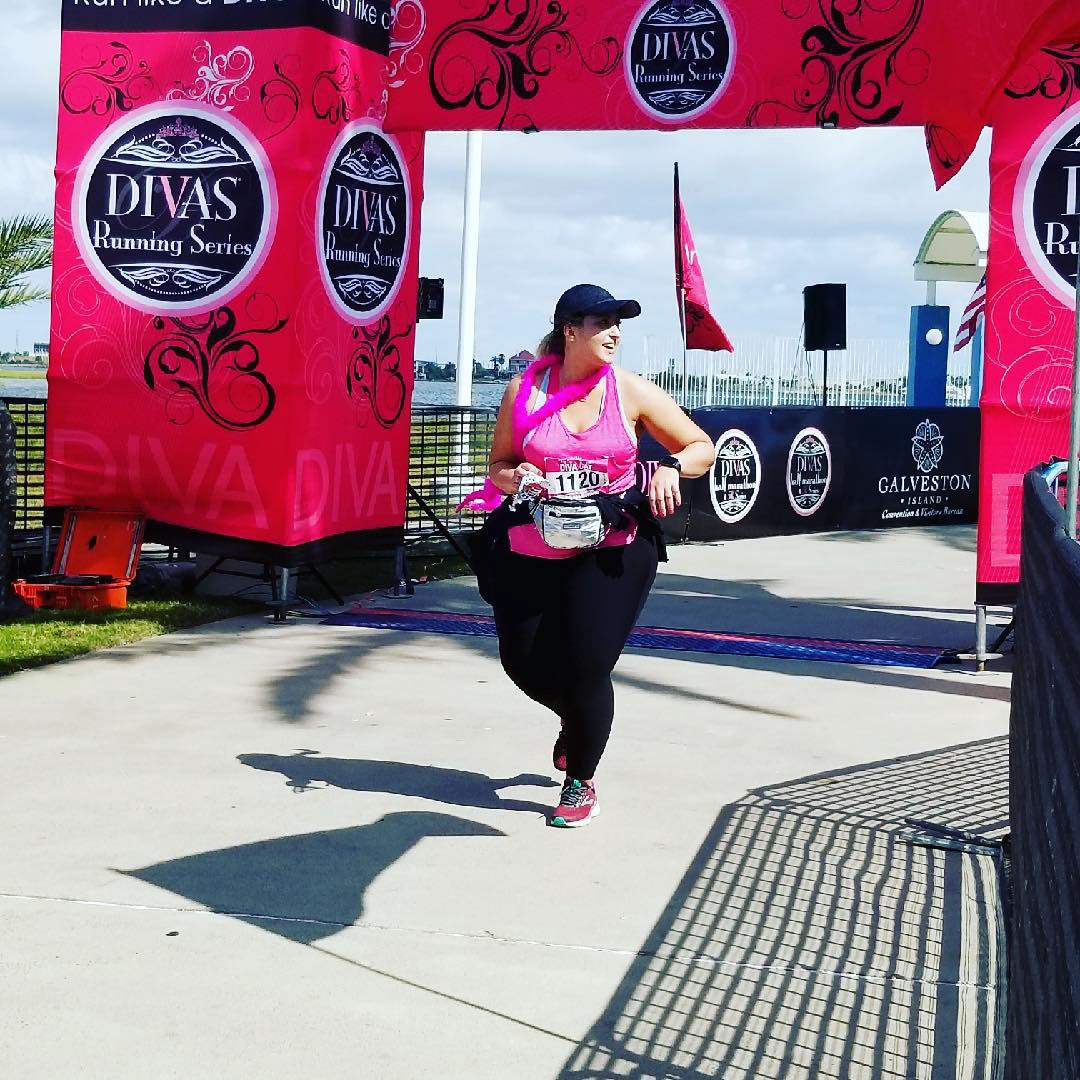

Eleven years later, as I ring in my 30th birthday, I wish I could say I’ve learned to love my body and embraced the “Every Body is Beautiful” campaign. But I’ve been worn down, embarrassed, and depressed. In the two minutes between a shower and getting dressed that I avoid eye contact with myself, I evaluate the painful bruising all over my legs. I take in all my weird, bulky cellulite that, for some reason, always appears extra-fatty while also extremely firm. I avoid physical touch because even a gentle tap is painful. I teeter between sadness, helplessness, and anger.
Why do I wear a small t-shirt and an XL pant? If I lose weight, why is it always in my upper body, and I remain a size 16 jeans at any weight? My god, I cannot afford to lose another cup size. I start to furiously ask Google all of these questions. I ask her why my knees have so much fat around them, why I bruise so easily, and why I can’t run anymore without incredible pain. As I start to go down the 2 AM rabbit hole, I come across a medical journal in Germany about fat disorders and start reading about something called Lipedema. From here, my journey to healing (but also a lot more pain and anger) begins.
Lipedema is a subcutaneous adipose tissue disorder, in which the blood vessels and lymphatic system do not properly move toxins out of the body through the lymph nodes. This causes easy bruising, swelling, bulky legs (and sometimes arms), chunky looking cellulite that are actually lumpy cyst-like bulges, and cuffs around the wrists and ankles. Essentially, the body doesn’t drain liquid, and the “clogging” causes fatty masses all over the body. Specialists estimate this affects approximately 10% of women across the world, yet it goes widely undiagnosed. Or, more commonly, misdiagnosed as obesity.
After reading as much as I could about lipedema disease and the handful of doctors who study it in the US, I brought this information to my doctor. He scoffed at me, requested I stop self-diagnosing, and suggested I get lap band surgery. He would prefer I get a serious surgery to remove part of my stomach, despite all my labs coming back athlete-level healthy. Upon a second request for a referral, he suggested I increase my anti-depressant dosage, and again, stop reading fake medical journals. I left in tears, half out of anger and half out of embarrassment.
After a few days of additional research, I started making calls. I found the best doctor specializing in subcutaneous adipose tissue (SATs) disorders, flew to Arizona from Texas, and was immediately diagnosed. I was put on a strict diet, prescribed a compression machine and compression garments, and am scheduled to get out-patient surgery to drain my excess fluid by the end of the year. It is generally an inconvenience, but I’m psyched for what comes next.
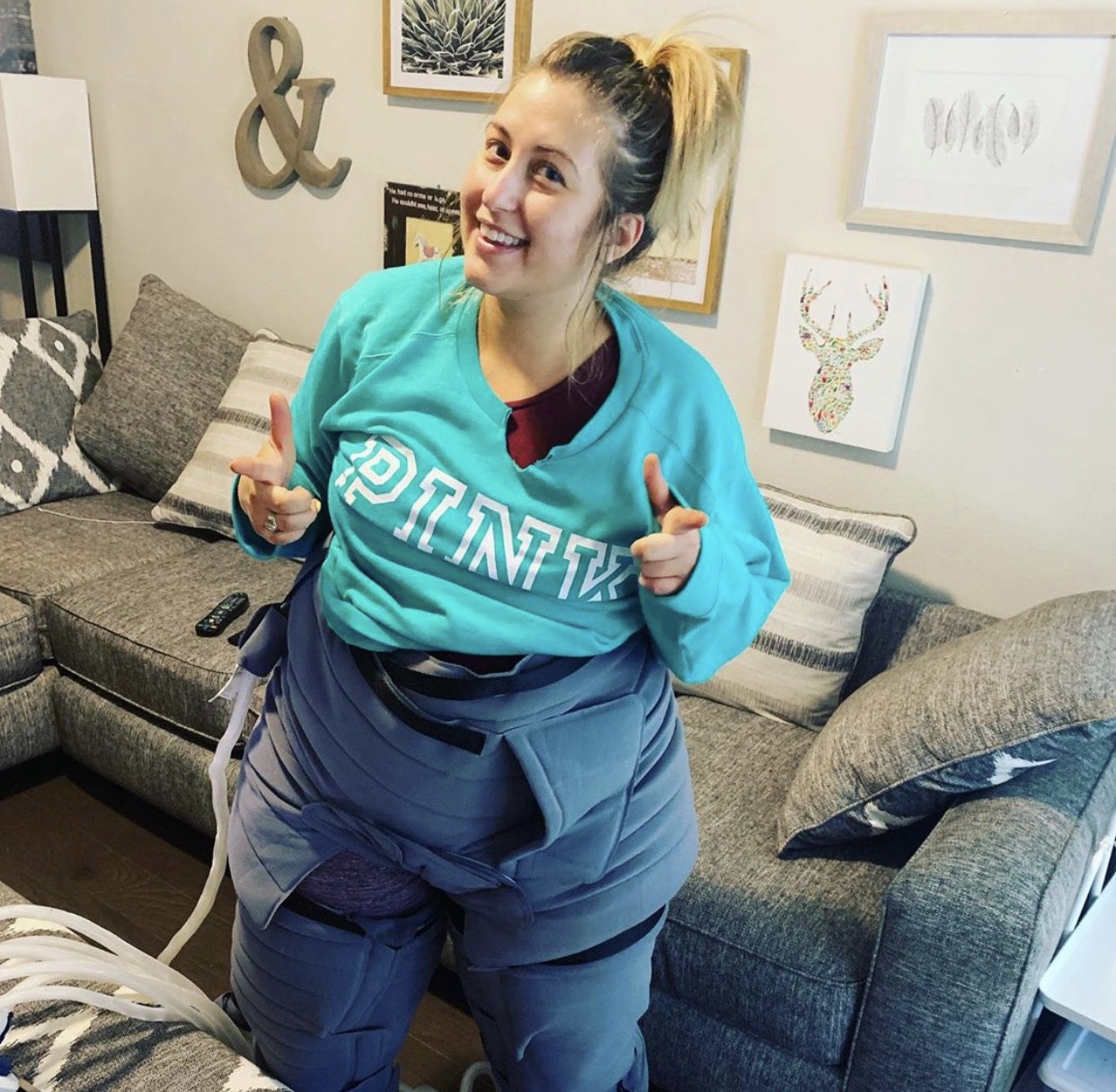

I’ve just completed a DNA test for a research study related to these disorders and will participate to evaluate the affect this surgery has on the disease. While I plan to journal my own experience through the process, I’m particularly interested in spreading the word about Lipedema, given my experience with gas lighting from my many male doctors. While in AZ, each team member had story after story about women being told they were crazy, that they were lying about their diets, exaggerating their pain, and simply not working hard enough.
The thought of one person going through a serious surgery like the lap band procedure recommended to me — when it won’t actually help — terrifies me. Stay tuned for my many updates, but in the meantime, feel free to reach out to me if you think any of the following apply to you:
I’m happy to direct to you those who have helped me. Stand up for yourselves, girlies. Be your own advocates, and down with the patriarchy.
We are very grateful to Ms. Karwick to allowing us to share her experience.
Cat Karwick
Follow
Content Creative. Women’s Health Advocate. Experience calling out mansplainers and finding carb substitutes.
Following
Sep 23, 2019 · 4 min read
This article is from Medium.com and was posted on Sept 2019. https://medium.com/@karwickca/lipedema-ruined-and-saved-this-fat-girls-life-26ce65ec9185